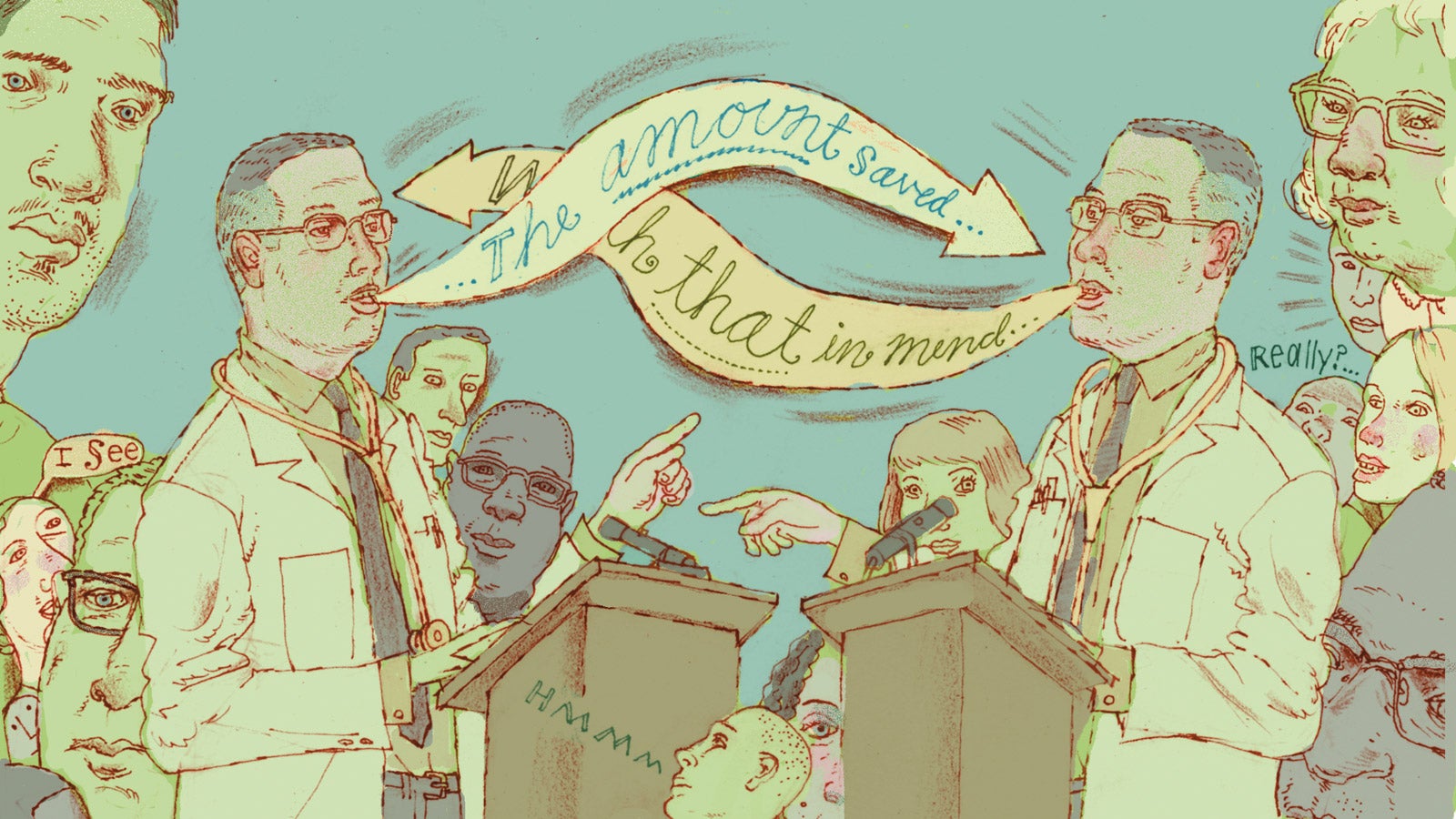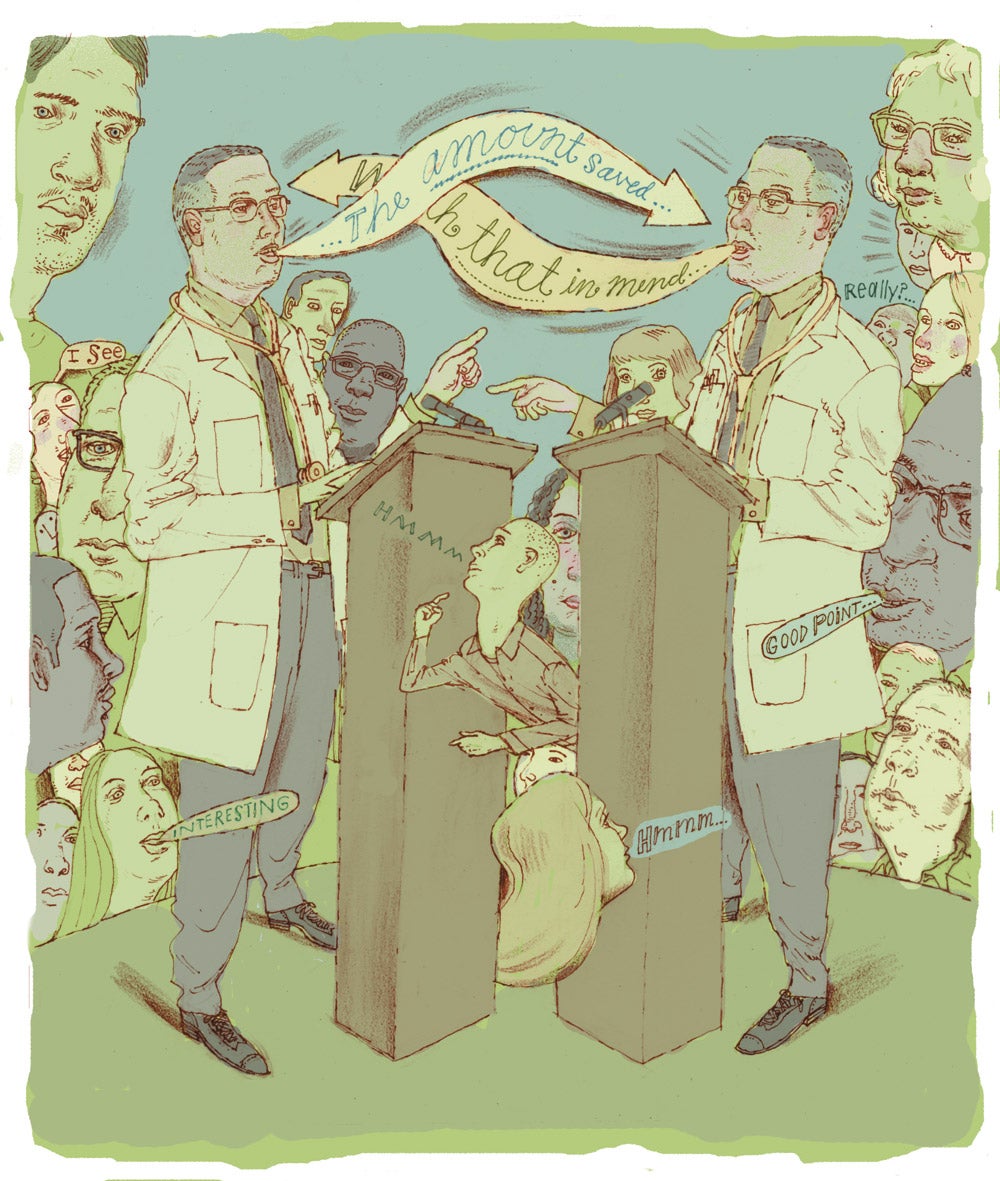
A Health Care Debate: Do We Really Need More Doctors?
Spring 2014
How many doctors are needed for good health care? Few would deny that health care issues incite controversy: The Affordable Care Act has generated much debate. But numerous other issues, including questions about how we should recruit, educate, utilize and pay our health care workforce, are also controversial. When UCF faculty members discuss such matters among themselves, there frequently is much disagreement. In fact, the disagreement has reached such a level that I no longer agree with myself.
Why We Don’t Need More Doctors
The United States does not need to educate a larger number of doctors. The major factor preventing us from having enough health care services is how doctors and other health care workers are utilized. Today many doctors function inefficiently and are performing services that could be done by nurse practitioners and physician assistants. As determined by Dr. Elliot Fisher, director of The Dartmouth Institute for Health Policy and Clinical Practice, there is no relationship between the number of doctors in a region or an institution and the quality or quantity of its medical services. For example, Ronald Reagan UCLA Medical Center utilized about 40 physicians to do the equivalent amount of work done by 50 physicians at Cedars-Sinai in Los Angeles. But the Mayo Clinic in Rochester, Minn., did the same amount of work with somewhat better outcomes utilizing only 20 physicians. Nationally we are closer to Cedars-Sinai statistics. If we deployed our medical personnel as they do at Mayo, we might achieve better care with only 40 percent of the doctors we use today. And these statistics do not include tests of how much more medical work could be done by professionals other than physicians. For example, the MinuteClinic chain of health care providers uses nurse practitioners at 30 to 40 percent below the typical cost charged by primary care physicians, and their patient satisfaction is extremely high. And future technology will enable nondoctors to make many of the same diagnoses as doctors. Similar systems could be used by primary care physicians to eliminate some of the need for specialty referrals.
According to some estimates, it will be possible for us to have better medical care with about 20 percent of the physicians per capita that we now think we need. It will take time, but it is important to implement these strategies rather than rely on the most expensive way of increasing the availability of health care services — increasing the number of physicians.
How many doctors are needed for good health care? Few would deny that health care issues incite controversy:
The Affordable Care Act has generated much debate. But numerous other issues, including questions about how we should recruit, educate, utilize and pay our health care workforce, are also controversial. When UCF faculty members discuss such matters among themselves, there frequently is much disagreement. In fact, the disagreement has reached such a level that I no longer agree with myself.
Why We Need More Doctors
Our nation has an urgent need for more physicians. Helping to fill this need motivated me to leave the Geisel School of Medicine at Dartmouth to help build a medical school at UCF. Patients are complaining about wait times, and hospitals and clinics are struggling to recruit doctors. Dr. Richard Cooper, a professor of internal medicine at the University of Pennsylvania, has projected that by the year 2020 the U.S. will have a deficit of 200,000 doctors. In addition, the large number of baby boomers will require an increasing amount of medical care. Add to this the fact that young doctors do not want to work the long hours that their predecessors typically worked, and we have a prescription for a demographic disaster of unmet medical needs. Many other prestigious organizations, including the American Medical Association, support this viewpoint. Of course, training physicians is time-consuming and expensive. If we really need 200,000 additional doctors by 2020, it’s not feasible. The population of American-educated doctors is now about in equilibrium between retirements and new physicians. To increase by 200,000 in six years would require an additional 35,000 doctors per year, which would require more than 300 new medical schools the size of the UCF College of Medicine. That’s not going to happen. (If we did build that many schools, we would ultimately have a great surplus of doctors.) So we do need to assess our physician organization and deployment, the recruitment of more nurse practitioners and physician assistants, and the use of newer technologies to facilitate efficiency. But just as acquiring 200,000 doctors is untenable, so is the idea that we can just flip a switch and make all of our physicians practice like those at the Minnesota Mayo Clinic. One also must consider that Mayo’s physicians are not typical. Any such grand reorganization is not going to happen by 2020 and probably not even in its entirety by 2030. So at least some of the services gap is going to have to be filled the old-fashioned way — with new medical doctors.
Stephen A. Berman, M.D., Ph.D., is a professor of neurology in the Department of Clinical Sciences at the UCF College of Medicine. The board-certified neurologist with a special interest in the neurodegenerative diseases of aging has performed clinical research on Alzheimer’s disease, stroke, neuropathy and muscular dystrophy.

Illustration by Regan Dunnick